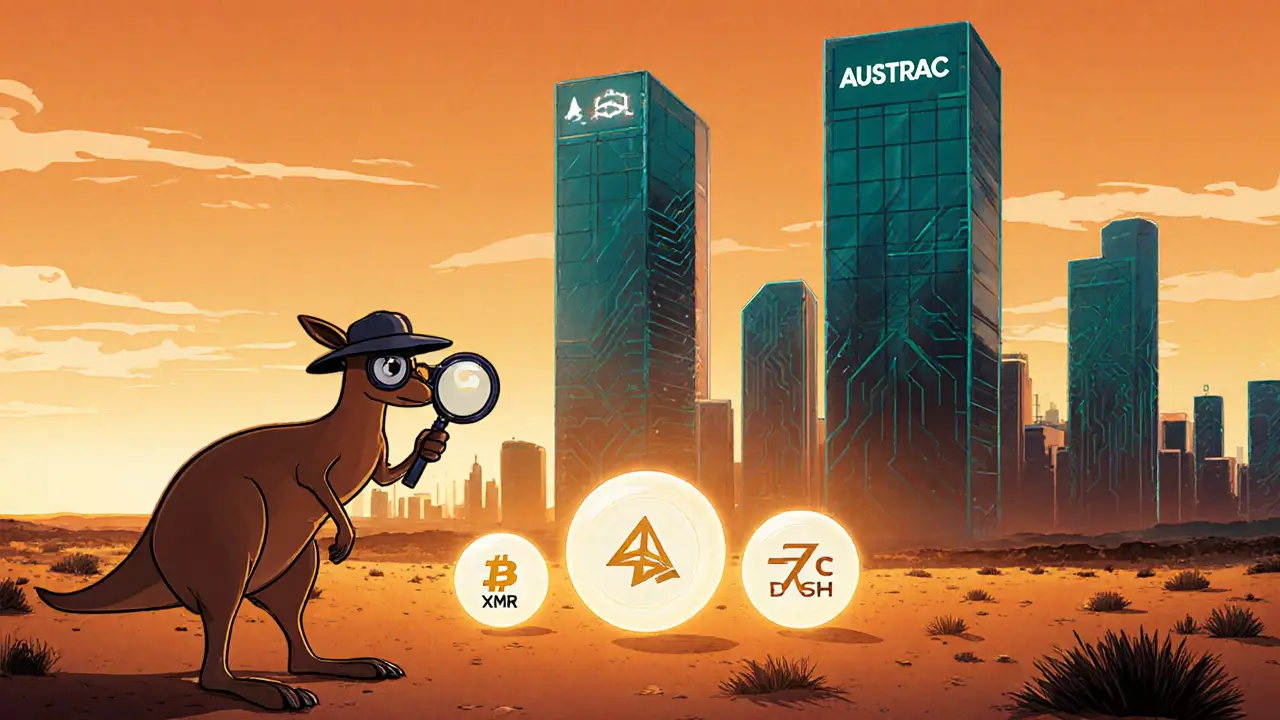AUSTRAC and Crypto: What You Need to Know
When navigating Australia’s crypto landscape, AUSTRAC, the Australian Transaction Reports and Analysis Centre, enforces anti‑money‑laundering (AML) and counter‑terrorism financing rules for digital assets, also known as Australia’s financial watchdog, serves as the central compliance authority. AML compliance, the set of rules that stop illicit money from flowing through crypto exchanges and KYC obligations, the identity‑verification steps required of users and service providers are the two pillars AUSTRAC constantly monitors.
How AUSTRAC Shapes Crypto Regulation
AUSTRAC’s remit goes beyond simple reporting; it defines the regulatory framework that Australian exchanges must follow. By issuing guidance on token classifications, it dictates whether a digital asset falls under securities law or remains a utility token. This classification directly influences the licensing requirements for platforms and determines which consumer protections apply. In practice, an exchange that mislabels a security‑like token can face hefty fines, revocation of its licence, or even criminal prosecution.
One of the most visible ways AUSTRAC enforces rules is through its sanctions enforcement, the process of blocking transactions linked to sanctioned individuals or jurisdictions. Crypto firms that neglect to screen wallet addresses against Australian and international sanctions lists expose themselves to legal risk and may be forced to freeze user funds. The watchdog regularly publishes case studies where failure to screen resulted in frozen assets and costly investigations.
Beyond direct enforcement, AUSTRAC partners with industry‑focused analytics firms to monitor blockchain activity. These partnerships provide real‑time transaction monitoring, flagging patterns that resemble money‑laundering or terrorist financing. The data feeds into AUSTRAC’s risk‑based approach, allowing it to target high‑risk actors while offering guidance to lower‑risk participants. For traders, this means that suspicious activity alerts may appear on their dashboards, prompting immediate action.
For crypto developers, AUSTRAC also sets expectations around reporting obligations, the mandatory submission of transaction summaries, suspicious activity reports, and annual compliance statements. Missing a filing deadline can trigger administrative penalties that quickly add up. The reporting cadence varies: high‑volume exchanges submit monthly Suspicious Matter Reports (SMRs), while smaller wallet providers might report quarterly. Understanding these timelines helps businesses allocate resources efficiently and stay ahead of compliance audits.
Another critical area is the interaction between AUSTRAC and the broader international AML network. Through information‑sharing agreements with bodies like FATF and the Financial Action Task Force, AUSTRAC aligns its standards with global best practices. This alignment means that Australian crypto firms often adopt the same risk‑assessment models used in Europe or North America, simplifying cross‑border operations and reducing duplicated compliance work.
From a user perspective, AUSTRAC’s rules translate into everyday actions: providing a government‑issued ID, answering source‑of‑funds questions, and monitoring transaction limits. While these steps may feel cumbersome, they protect both the individual and the ecosystem from fraud and illicit activity. Moreover, compliant platforms tend to offer better customer support, faster withdrawals, and higher insurance coverage because they meet the regulator’s standards.
Looking ahead, AUSTRAC is actively consulting on emerging trends such as decentralized finance (DeFi) protocols, non‑fungible tokens (NFTs), and stablecoins. Early drafts suggest that DeFi aggregators may soon be required to register as reporting entities, while NFTs could face classification checks if they are used as investment vehicles. Keeping an eye on AUSTRAC’s consultation papers helps businesses anticipate rule changes before they become mandatory.
Below you’ll find a curated list of articles that dive deeper into each of these topics—ranging from step‑by‑step KYC guides to analyses of recent AUSTRAC enforcement actions. Whether you’re a trader, exchange operator, or just curious about Australia’s crypto oversight, the posts ahead give you practical insights to stay compliant and informed.
Australian Crypto Exchanges Ban Privacy Coins - What It Means for Users
Australian crypto exchanges have stopped listing privacy coins like Monero, Zcash and Dash. While ownership stays legal, trading on regulated platforms is blocked, pushing users to riskier peer‑to‑peer markets. Learn why regulators acted, the global context, and what to expect next.
read more

